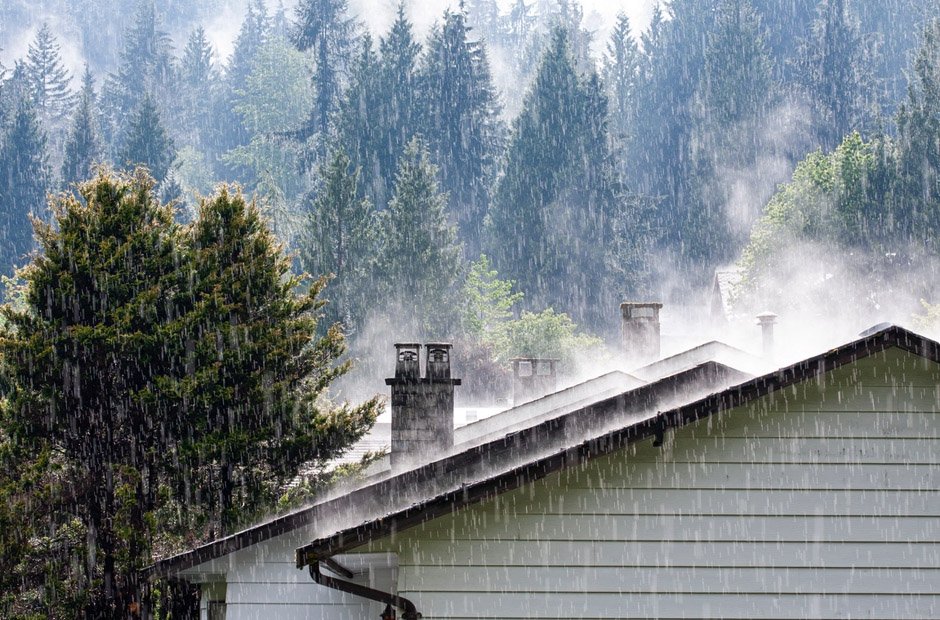When most people think of disaster damage, they think of things that are blatantly clear. Water pooling on the floor. Blackened walls from an inferno. A section of the roof missing after a tornado passes through town. These are all things that you fix first – or at least, need to fix. And of course, those things do need to be remedied. But what people don’t expect is that the things that are not visible 99% of the time are what cost the most money and headaches down the line.
Your home has no secrets. It’ll tell you something is wrong but it doesn’t always make it clear how and why.
When Walls Lie
If you touch a wall that’s seemingly unscathed following an incident with water, it feels dry, right? Well, that doesn’t mean anything because drywall and paint dry from the outside in, meaning that you could feel one side of the wall good as new while water is still sitting stagnant behind the seams for weeks on end, causing real issues.
But that stagnant moisture doesn’t sit still. It travels. It travels through studs, insulation, subflooring. Within about 48 hours, the conditions become optimal for mold growth throughout places that are entirely inaccessible without destroying half your home. Mold can grow on wood, drywall, insulation – or even dust if conditions are favorable.
This is why professionals come in with moisture meters and thermal cameras. They aren’t showing off their expensive equipment; they’re actually uncovering moisture that’s been undetectable up until this point. It can read 8% moisture on one side of a wall but 40% three inches deep with the moisture penetrating from the inside out. That means, you think you’re good when a major portion needs to come out.
The Air Quality Nobody Knows About
After any massive property disaster, the air quality inside becomes compromised. Most people notice an odd smell and think, “it’ll get better when everything dries out.” Sometimes that’s true. But more often, that’s not – and it’s because people don’t know that they’re smelling something much worse.
Particles released from disrupted insulation. VOCs (volatile organic compounds from burned materials – or more simply put: nasty chemicals). Mold spores released back into air when they were comfortably nesting in pre-disaster climates for nearly all of their lives. All of these particles travel into your mouth through the air you’re breathing and your HVAC system is more than happy to distribute it throughout the property.
What’s worse is that people start to feel symptoms over time – or not at all. For weeks, nothing occurs. But after a month of breathing in microscopic particles and spores, people develop headaches, respiratory irritations, fatigue – and they blame stress or seasonal allergies when in reality, they’re symptoms caused by looking over air quality concerns preemptively.
This is why many homeowners call in expert emergency water damage services after disasters – their air is tested immediately and special filtration systems are put in place during cleanup efforts (not just afterward). No one wants to appear paranoid. But even if symptoms develop months later that have been correlated with hidden damage, people would have preferred it caught months prior.
Developing Structural Concerns
And this is where the money goes up in ways insurance companies love to contest. A floor joist gets soaked from a flood but it doesn’t buckle immediately. The integrity remains compromised for months until moisture works itself into the fibers of wood. The same applies with roof decking, wall studs, support beams – they all lose integrity eventually.
A homeowners sees a little brown water spot on the ceiling, patches it up and repaints. Six months later the area has sagged into their kitchen; this isn’t a new problem forming – this is an old problem that’s had time to permeate and develop.
Wood rot is also a sneaky piece of business – if you see it on the surface, it’s likely had time to rot through the thickness of whatever board or beam you’re examining. You could test if it’s good by digging a screwdriver or awl into it – if it easily goes in, the structural value has long been compromised although it looks good from afar.
The worst occurs in crawl spaces and attics – in areas people don’t often go into. They’re ideal moisture pockets for things like condensation or damp insulation and wood rots – but since no one’s looking up there or down there – nothing’s found until something sinks down or starts cracking up above.
The Wild Card of Electrical Components
Most people understand that water and electricity do not mix. But when a house suffers flooding or other types of water damage, that doesn’t mean immediate dangers present themselves.
Moisture corrodes connections in outlet boxes and junction boxes and breaker panels – wherever connections are made to wiring and any supply source comes into play. These create resistance; resistance creates heat; and heat signals fires, which happens MONTHS after the original cause.
Someone flicks on a switch one day and hears a pop. An outlet stops working completely. A breaker keeps tripping for unknown reasons. Electricians flip open junction boxes and observe corrosion that may be years old.
The same occurs with appliances – dishwashers and washing machines that emerge from floods without electrical failure – but once components corrode over time due to water exposure, suddenly appliance motors start going and lights start flickering for no reason at all.
HVAC systems have electrical components, fans, motors, and control boards that do not appreciate getting wet.
What Professionals Actually Detect
Restoration specialists do not just look at visible damage for an estimate – they find all the problems that will surface down the line if they aren’t caught now – including pulling back carpeting (padding and subfloor) to find all the failings between surfaces; drilling small exploratory holes to get behind walls; infrared cameras to detect temperature changes if something is cooler than it should be or there’s less insulation than there should be.
It’s invasive – but if hidden damage can be found now, then it can be fixed while contractors are onsite anyway – insurance claims are still open – and it hasn’t been given time to take hold.
Finding something months down the line requires going back through the process anew – getting estimates again; getting insurance involved again; having contractors rescheduled.
While technology plays a role in hidden detection, knowledgeable professionals who’ve seen thousands of water-damaged properties know where the problems hide based on construction type and they know how water moves through properties (split levels versus ranch designs) plus what building materials respond well for drying versus what needs replacement despite feeling dried from independent assessment.
The Cost of Time
Every day hidden damage goes unchanged and costs more money to fix it. Mold multiplies exponentially over linear growth; a small colony becomes large becomes hazardous requiring remediation with containment barriers and air scrubbers.
In addition, structural damage works similarly – a compromised joist ends up compensating surrounding joists; a small roof leak becomes large; water degrades more roof decking until it’s underneath shingles.
That’s why restoration isn’t necessarily about fixing what’s seen; it’s about finding what’s inevitably going to be a problem later – and taking care of it while you still can without wasting time or money down the line because now an additional intervening problem has emerged.
Your house will eventually tell you there’s something wrong – but the question is whether you’ll catch it early or she’ll announce it in expensive ways that no one can ignore ever again.



